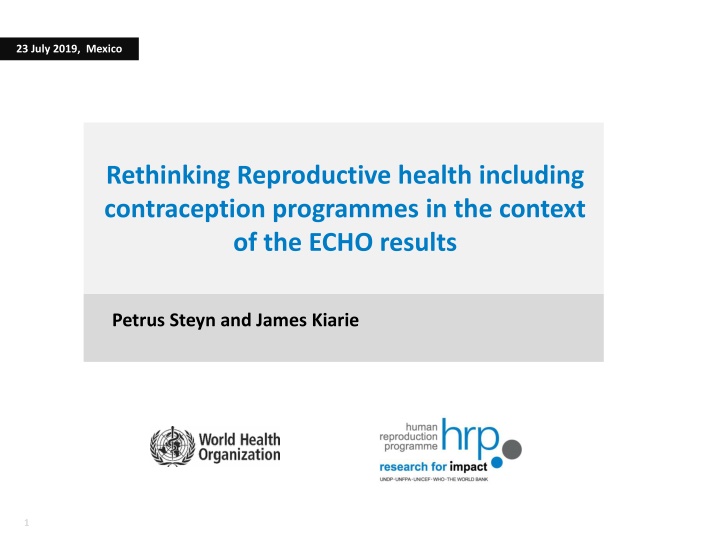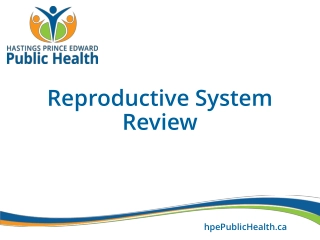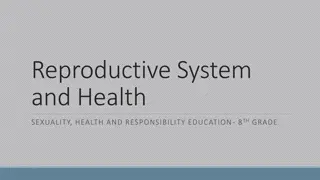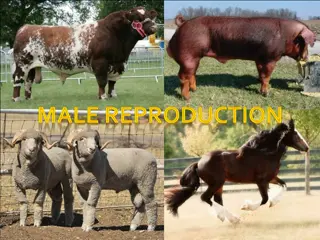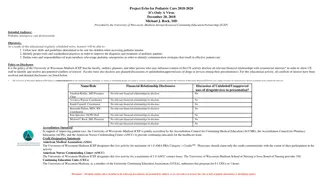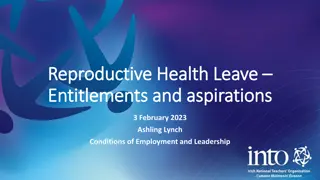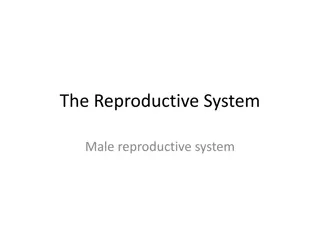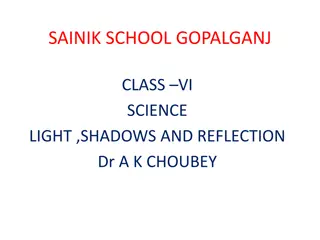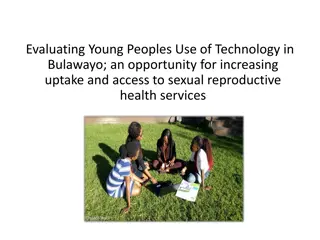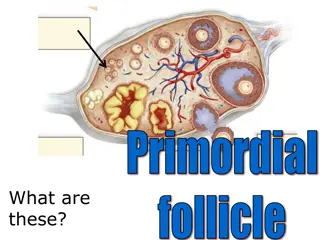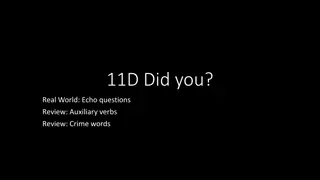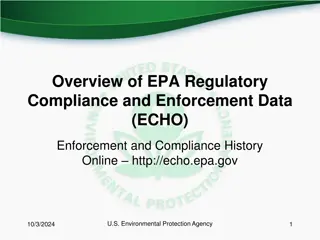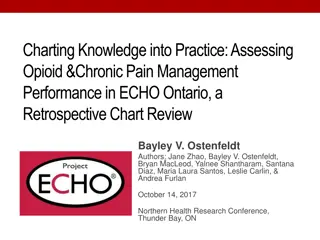Improving Reproductive Health Programs in Light of ECHO Results
Rethinking reproductive health and contraception programs is crucial in light of the ECHO study findings. Key considerations include maximizing access to preferred contraceptive methods while ensuring women's health, stepping up HIV prevention efforts, and promoting linkages and integration between SRHR and HIV services for effective outcomes. The call to action emphasizes the need for community engagement, eliminating silos, providing sufficient resources, and strengthening partnerships to achieve Universal Health Coverage. Expanding contraceptive choices through new technologies and self-care interventions is also highlighted for improved family planning services.
Download Presentation

Please find below an Image/Link to download the presentation.
The content on the website is provided AS IS for your information and personal use only. It may not be sold, licensed, or shared on other websites without obtaining consent from the author.If you encounter any issues during the download, it is possible that the publisher has removed the file from their server.
You are allowed to download the files provided on this website for personal or commercial use, subject to the condition that they are used lawfully. All files are the property of their respective owners.
The content on the website is provided AS IS for your information and personal use only. It may not be sold, licensed, or shared on other websites without obtaining consent from the author.
E N D
Presentation Transcript
23 July 2019, Mexico Rethinking Reproductive health including contraception programmes in the context of the ECHO results Petrus Steyn and James Kiarie 1 1
Outline ECHO Study key considerations Integration of HIV prevention in SRHR services Expand contraceptive options Policy and programme considerations Listening to ECHO 2 2
Key considerations Access to preferred contraceptive methods should be maximized, while protecting women s health Women have the right to the latest and best information and to access a broad range of effective and acceptable methods Current levels of contraceptive unmet need in many developing countries are not acceptable Need to step up HIV prevention efforts, particularly in high- burden countries and for young women. 3 3
What Do We Mean by Linkages & Integration ? Linkages are bi-directional synergies in policy, systems and services between SRHR and HIV Integration refers to joining operational programmes to ensure effective service delivery outcomes through various modalities (multi-tasked providers, referral, one-stop shop services under one roof, etc.) Source: IAWG on SRH and HIV Linkages (2016) SRHR and HIV Linkages: Navigating the work in progress 2016 The IAWG on SRHR/HIV Linkages For more information see www.srhhivlinkages.org 4 4
Call to Action to attain UHC through linked SRHR and HIV interventions 1. Meaningful community engagement 2. Eliminate silos between SRHR and HIV 3. Provide sufficient domestic resources 4. Inclusive primary health care services 5. Stronger multi-sectoral partnerships 6. Promote innovative approaches 5 5
SRHR and HIV Linkages Toolkit: http://toolkit.srhhivlinkages.org A simple to use toolkit that guides users to the most recent, relevant and important SRHR and HIV linkages resources 6 6
Expanding contraceptive method mix All three methods were well accepted and had high levels of safety and effectiveness Countries should consider expanding contraceptive choices by introducing new contraceptive technologies, expanding access to existing methods, expanding the provider base and including self-care interventions. Self-care interventions for family planning are included in the WHO consolidated guideline on self-care interventions for health: sexual and reproductive health and rights 7 7
Considerations for expanding Contraceptive Choice Introducing new contraceptive technologies Expanding access to exciting methods Expand provider base 8 8
WHO Consolidated Guideline on Self-Care Interventions for Health - Sexual and Reproductive Health and Rights 2. Providing high-quality services for family planning, including infertility services REC 10 (NEW): Self-administered injectable contraception should be made available as an additional approach to deliver injectable contraception for individuals of reproductive age. REC 11 (NEW): Over-the-counter oral contraceptive pills (OCPs) should be made available without a prescription for individuals using OCPs. 9 9
Maximize the potential of expanding Contraceptive Choices Ensure a robust supply chain Improve provider training and counselling Generate demand 10 10
Listening to the ECHO Although nothing new, it is the time for integration and method mix expansion Advocacy Presence of task-teams Emerging technologies Comprehensive rights based approach Self-care intervention may provide some opportunities Explore implementation studies that promote FP and HIV prevention outcomes 11 11
